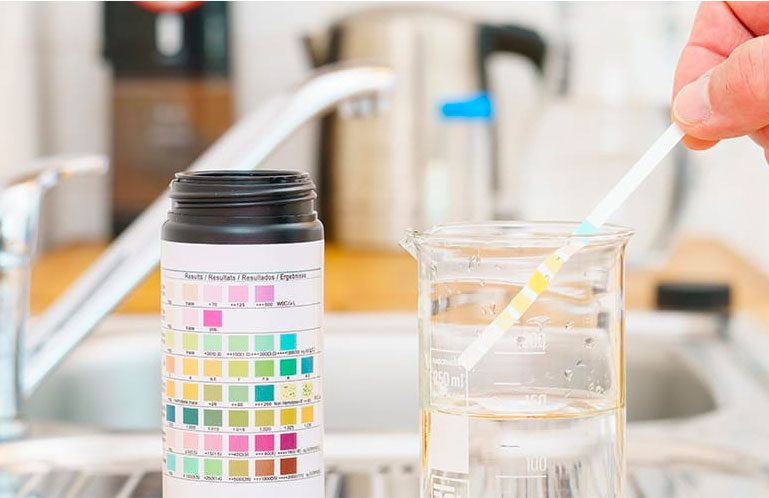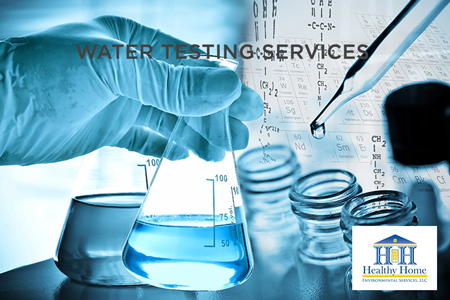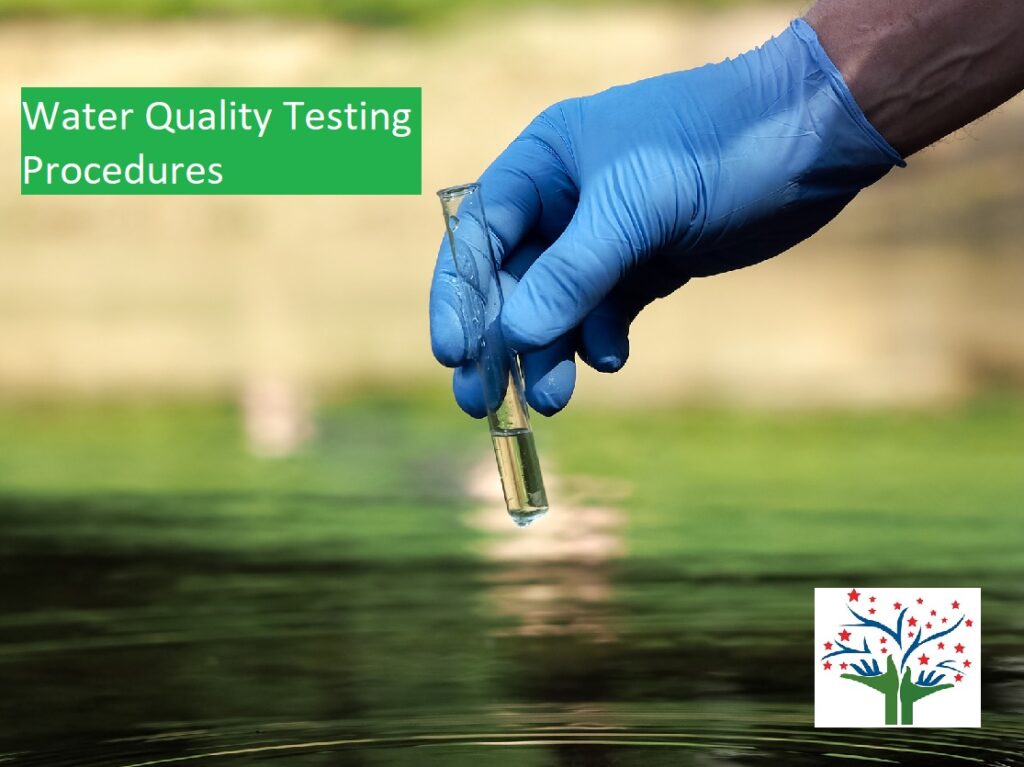Why You Should Choose Our Water Testing Service for Your Home
Why You Should Choose Our Water Testing Service for Your Home
Blog Article
Discover What Is Consisted Of in Water Evaluating and Just How It Guarantees Safe Alcohol Consumption Water
Recognizing the ins and outs of water testing is critical in making certain the high quality and safety and security of our alcohol consumption water. Via a meticulous evaluation of physical, chemical, and microbiological aspects, water testing identifies possible impurities that could posture wellness threats. From the existence of heavy steels to hazardous microorganisms, each test part plays a crucial duty in keeping the honesty of our supply of water. Advanced strategies like chromatography and spectrometry boost the precision of these analyses. Exactly how do these procedures translate right into the regulatory structures that assure security in our daily intake?
Trick Components of Water Testing
Water testing is a critical process that includes numerous key components to make certain the safety and high quality of alcohol consumption water. In addition, ensuring the pH balance of water is vital, as it influences the water's corrosiveness and the efficacy of disinfection processes.
Another considerable element includes microbiological analysis, where water samples are analyzed for the existence of microbes such as microorganisms, infections, and protozoa. If consumed, this analysis is essential to recognize organic risks that might position health risks. Additionally, chemical analyses are carried out to discover organic and not natural materials, such as hefty metals, nitrates, and pesticides, that might be present in the water supply.

Identifying Unsafe Pollutants
Detecting unsafe pollutants in alcohol consumption water is an essential facet of protecting public wellness. This process entails determining possible threats that can jeopardize the top quality and security of water materials. Impurities can range from microbes such as microorganisms, viruses, and protozoa, to not natural substances like lead, arsenic, and nitrates, as well as organic contaminants consisting of pesticides and industrial chemicals. Each sort of impurity poses unique wellness risks, making their detection vital to ensure the water taken in by the public is risk-free.
Water testing for contaminants is generally carried out by regulative agencies and water energies, employing a combination of field sampling and laboratory analysis. These assessments are developed to discover both naturally happening compounds and anthropogenic pollutants that may have entered the water system with agricultural runoff, industrial discharge, or maturing framework. Routine tracking is necessary, as contamination degrees can change because of environmental changes, seasonal variants, or human activities.
The recognition of hazardous contaminants informs necessary activities, such as water treatment interventions or public advisories, to reduce risks. Early discovery is vital to avoid damaging health and wellness impacts, ranging from gastrointestinal illnesses to long-term conditions like cancer cells, thus making certain the continued security of alcohol consumption water.

Chemical Evaluation Techniques
In the world of ensuring secure alcohol consumption water, chemical analysis techniques play a critical duty in determining and evaluating impurities. These techniques are essential for spotting a broad variety of chemical materials, including hefty metals, chemicals, and commercial toxins, which can posture considerable health dangers.
Gas chromatography-mass spectrometry (GC-MS) is another important technique, particularly for organic compounds. It divides complex mixes and recognizes semi-volatile and unpredictable organic substances, ensuring that contaminants like benzene and toluene are within safe restrictions. High-performance liquid chromatography (HPLC) is in a similar way utilized for non-volatile substances, consisting of certain pesticides and pharmaceuticals.
Ion chromatography is employed to establish focus of anions and cations, such as nitrates and sulfates, which are critical in analyzing water high quality. These chemical analysis methods jointly make sure that drinking water stays safe by finding variances from established purity norms, consequently safeguarding public wellness. Guaranteeing accuracy and precision in these examinations is paramount to keeping the stability of water safety and security assessments.
Microbiological Evaluating Methods
Accurate microbiological testing is crucial for securing public health by guaranteeing that alcohol consumption water is without dangerous pathogens. This process includes identifying and mentioning microbes such as microorganisms, infections, and protozoa that might pollute water materials. Common virus consist of Escherichia coli, Giardia, and Cryptosporidium, each posturing substantial wellness risks.
Numerous techniques are employed in microbiological testing to identify these hazards. The membrane purification method is frequently used, entailing water travelling through a filter that catches bacteria, which are then cultured to establish their existence and concentration. Alternatively, the multiple-tube fermentation approach makes it possible for the quantification of coliform microorganisms using a collection of dilution and incubation steps.
Developments in innovation have actually introduced molecular strategies such as polymerase chain response (PCR), which permits the highly specific and rapid detection of microorganisms by enhancing their hereditary product. Enzyme-linked immunosorbent assays (ELISA) also use a technique to spot pathogens by identifying particular proteins or antigens.
These differed techniques are necessary for extensive water top quality evaluation, making sure that water therapy processes are Read Full Report effective and that distribution systems keep safety and security. By using these microbiological testing methods, possible health risks can be recognized and mitigated without delay.

Importance for Public Health
Guaranteeing the microbiological security of alcohol consumption water directly influences public health by stopping the spread of waterborne diseases. Microorganisms such as bacteria, viruses, and protozoa can lead to illnesses like cholera, dysentery, and intestinal infections (Water Testing Services Near Me). The execution of their explanation detailed water testing protocols is paramount in recognizing and reducing these threats, hence guarding communities from prospective outbreaks
Regular water testing not just spots microbial contaminants yet likewise examines chemical and physical criteria that can impact health. As an example, extreme degrees of nitrates or heavy steels such as lead can pose major wellness dangers, specifically to at risk populations like babies and expectant ladies. By identifying these risks early, water screening enables prompt treatments, making sure the supply of water continues to be within safe intake standards.
In addition, water screening plays a critical function in maintaining public self-confidence in local water systems. For plan manufacturers and health authorities, the information obtained from water testing educates decisions on framework investments and public health strategies, making sure resources are guided where they are most needed.
Final Thought
Water testing functions as a necessary mechanism for ensuring the safety and quality of alcohol consumption water through comprehensive assessment of its physical, chemical, and microbiological buildings. By spotting damaging contaminants, such as hefty metals and chemicals, and making use of innovative techniques like chromatography and spectrometry, water screening helps with the identification of possible health and wellness dangers. The implementation of extensive screening procedures is vital for preserving conformity with security requirements, ultimately securing public health and wellness and strengthening confidence in local water systems.

By recognizing these hazards early, water screening makes it possible for timely interventions, making sure the water supply continues to be within secure usage standards.
Water testing serves as a crucial mechanism for guaranteeing the safety and top quality of drinking water through comprehensive evaluation of its physical, chemical, and microbiological residential or commercial properties.
Report this page